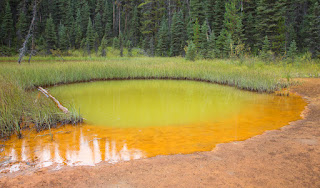Build a Pollinator Garden
Last summer I stumbled upon a post from the Xeres Society about taking the pledge to protect pollinators. Intrigued by that idea I took the pledge:
To Bring Back the Pollinators, I will:
1. Grow a variety of bee-friendly flowers that bloom from spring through fall.
2. Protect and provide bee nests and caterpillar host plants.
3. Avoid using pesticides, especially insecticides.
4. Talk to my neighbors about the importance of pollinators and their habitat.
2. Protect and provide bee nests and caterpillar host plants.
3. Avoid using pesticides, especially insecticides.
4. Talk to my neighbors about the importance of pollinators and their habitat.
Pollinators such as bees, butterflies, birds, beetles, bats, wasps and even flies are important and are declining fast due to the use of pesticides and an ever-expanding conversion of landscapes to mono-cultures or lawns. So I wanted to do my part and help them to come back. Kind of selfish in a way, since our vegetable garden and fruit trees would profit from it!
Thinking about where and how to set up a small pollinator garden, I found a perfect spot in between some big rocks. Last fall then I prepared the eroded soil in permaculture fashion to build up soil for this year. For more info on how to build your "own" soil with the permaculture method, check out my Conservation Tip from January 2014.
I then covered it up with silage foil and let it sit until spring. During winter I tried to figure out what would make sense to plant in our climate and made sure to have all the seeds ready. Some flowers, like the milkweed and the snapdragons I started inside at the end of February.
In May I uncovered it the little garden and installed soaker hoses.
I made a "plan" where to plant what and got to work...
The chickens really wanted to help, but since they thought they best help by eating the seeds, I had to surround it all by chicken wire.
First I covered the soaker hoses with soil and planted the plants I had bought (lavendar) or started inside (milkweed and snapdragons), then I put the seeds in the ground and hoped for the best. I also put up two deep dishes filled with water and rocks (to provide landing spaces), for the bees to drink.
It took quite some time, at least four weeks until everything started to actually grow, but then it kind of exploded and in August it looked like this:
It doesn't look like much since the sunflowers kind of took over and blocked the view of everything else, but the following close ups show the abundance
Snapdragons
Blue Poppy
Amaranth
Milkweed, a very important plant for the Monarch Butterfly
The place was and still is humming and bustling with all kinds of insects. The hummingbirds are gone by now, but enjoyed the garden during the summer. Not all the plants I planted did well, the Lupines never came, neither did the Forget-me-nots. Others like the sunflowers and the nasturtium took over way more space than I had planned. I guess there is a learning curve....
Right now I'm preparing another patch, this time right within our vegetable garden to have a second pollinator garden.
Get the shovel ready to start yours!
Here some websites that will help you find the right plants for your region and provide a lot of other tips and tricks:
Xeres Society
Pollinator Partners
Create a bee-friendly garden
kids gardening
Grow a greener world



































